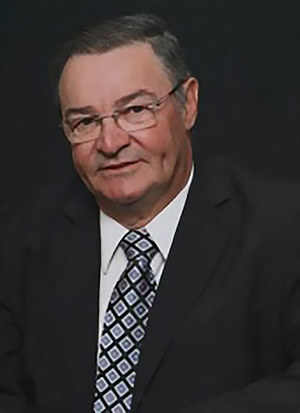The death of former UA Local 71 business manager Ronald Maisonneuve of mesothelioma linked to asbestos exposure hit the Ottawa-Gatineau trade union sector hard last month.
It was sadly all too familiar. Current Local 71 business manager Angus Maisonneuve, Ronaldās cousin, recalled when his father, also named Angus and a former Local 71 business manager, died of mesothelioma 20 years ago, it was Ronald who handled the WSIB claim. Now Angus will handle Ronaldās paperwork.
Angus and his father were both plumber/steamfitters and Ronald was a welder.
āShock and awe,ā said the surviving Maisonneuve when asked about the conversations at the memorial service attended by hundreds a few days after Ronaldās death on June 25.

āI sat with him and had a conversation and he said to me, and my dad said the same thing, āWhere in the world did I get exposed to this?ā Ron worked the tools as a welder for I donāt know how many years and then he became a business agent. I donāt think his exposure was all that high, but it just goes to show that you donāt need to be immersed in it up to your neck.ā
Angus the father would work in tight spaces and run his piping on beams that were covered with asbestos, his son said, but he never smoked or drank.
āMy dad was in pretty good shape ātill the asbestos kicked in,ā he said. āWhen you are diagnosed with mesothelioma, you have nine to 13 months.
āItās devastating for the family because my cousin Ron and his wife were in the same situation as my mom and dad. You know, theyāve been together forever. They were teenage sweethearts.ā
And the husbands both died relatively soon after the diagnosis, shocking their spouses and families, which include another eight or so members of the trade, said Angus.
Despite the federal ban on the use of asbestos in 2018 and the adoption of extensive training to avoid exposure in some sectors of the construction industry, it is estimated that more than 2,000 Canadians die each year from asbestos-related diseases, primarily mesothelioma and lung cancer.
Most work or worked in construction. And there are thousands more who suffer from asbestosis or other respiratory illnesses.
For Richard Hayter, director of community relations for the Eastern Ontario and Western Quebec Building Trades Council, the Maisonneuve memorial service in June was the 11th he has attended where the death was attributed to asbestos exposure. He had seen Ronald on June 22 and he died three days later.
Hayter said the death has reminded him of how much work has to be done before construction workplaces are safe places to work. He frequently speaks to parents and young apprentices about how great jobs in the trades are, Hayter said, but he is not sure workers are adequately protected from asbestos.
āThe unionized construction industry is really about values and about accomplishments,ā he said. āWell, we still havenāt done anything really in controlling the use of asbestos out there. There are 20,000 buildings still open, and so I started to realize that we have to get back on the horse and start emphasizing excellence.ā
Another member of the advocacy community, Alec Farquhar, the co-ordinator of Asbestos Free 17³Ō¹ĻĶų, has a long history of senior management in occupational health including a stint as director of the Ontario Ministry of Labourās Occupational Health and Safety Branch. Fifteen years ago, he took part of the implementation of Ontarioās asbestos regulation for construction.
āThat was a really solid example of a well-thought-out, carefully structured prevention program that Iām sure has prevented exposure to thousands of people through the years since it was implemented,ā said Farquhar.
Both Hayter and Farquhar identify extensive gaps that still exist in 17³Ō¹ĻĶųās asbestos policies despite notable successes, such as in B.C. Farquhar, a lawyer, recently penned A Call for Decisive Action to Move Towards an Asbestos-free 17³Ō¹ĻĶų.
The Justin Trudeau governmentās 2018 ban has opened the door for 17³Ō¹ĻĶų to develop a comprehensive strategy to address the legacy of asbestos in buildings, infrastructure and environment, Farquhar argues.
Many buildings from before 1990 contain asbestos, he points out.
Through the years, Farquhar said, 17³Ō¹ĻĶų has not fully recognized the health impacts of asbestos exposure, particularly for workers. A large number of the victims have never been compensated, because of a lack of information or scientific evidence.
āIn addition, due to the long latency of asbestos diseases, this health impact will unfortunately continue for years to come,ā he asserts.
Globally, the most successful efforts to deal with legacy asbestos have taken place in countries with comprehensive strategies.
The Australian Agency for Asbestos Safety and Eradication is the best example, Farquhar said. And so, he argues, a new agency should be mandated to develop a Canadian asbestos plan.
There has not been comprehensive action, Farquhar said, because other priorities, such as decarbonizing the economy, have taken priority. But the two goals are not mutually exclusive, he said.
Whenever there is a program to renew infrastructure, such as a building retrofit, he said, consideration should be given to combining efforts and addressing asbestos and radon as well.
āI think the time has come when everyone knows we need to do something and thereās a lot of goodwill,ā said Farquhar. āIām very optimistic.ā
Follow the author on Twitter @DonWall_DCN



Recent Comments
comments for this post are closed